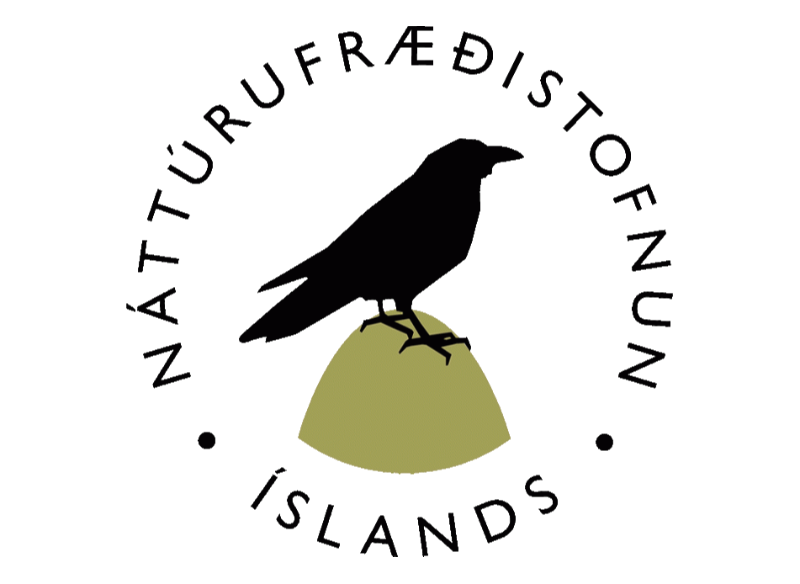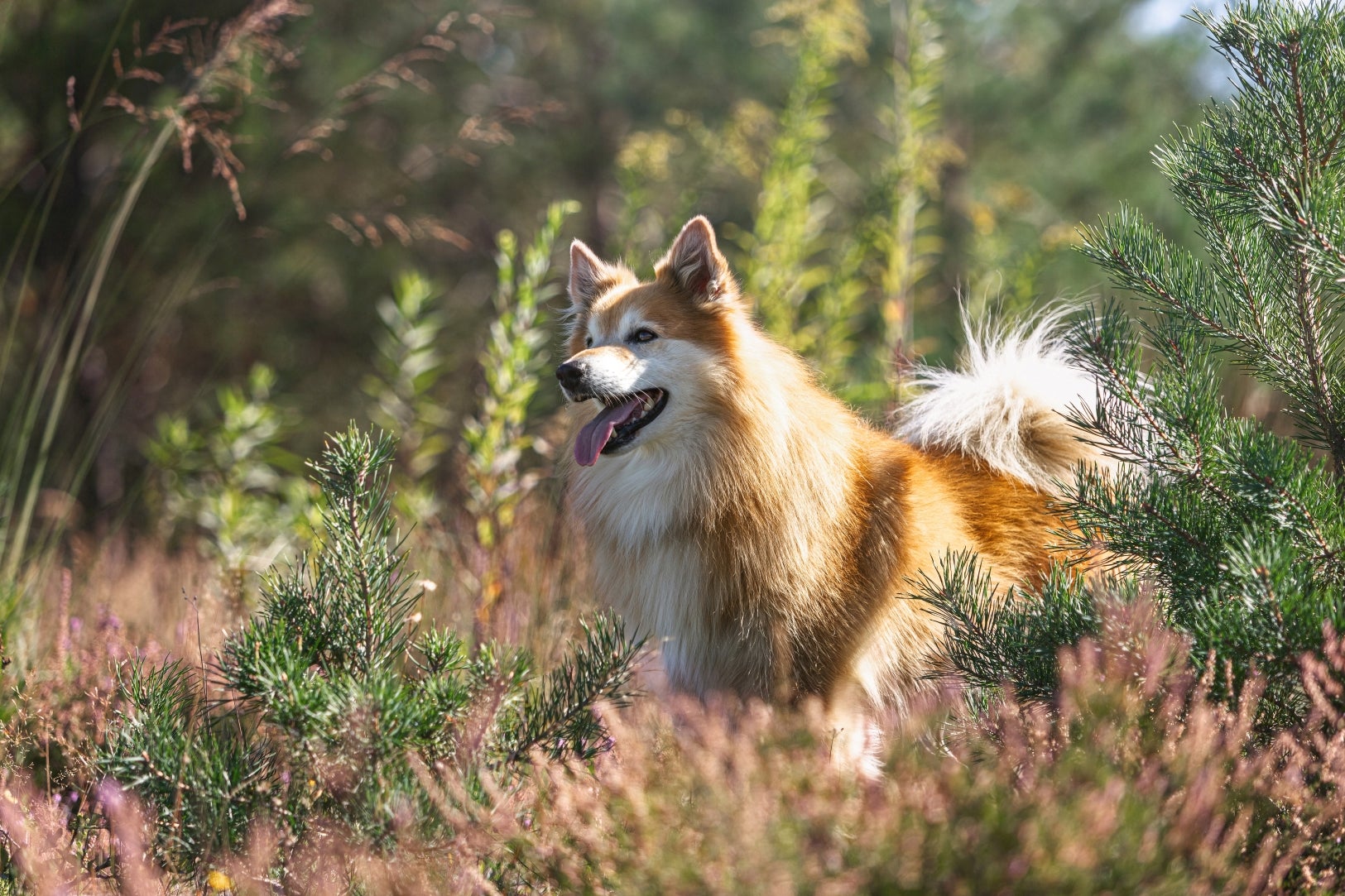
The raven is known for its cunning annd mischievous spirit that has left its mark on many facets of life in Iceland. Learn about the mysterious ravens and their ties to Icelandic culture in folklore, mythology, and beyond.
All over the world, the raven is a symbol of mystery, magic, and myth, and Iceland is no exception. These highly intelligent and often playful birds have impacted the culture of Iceland since settlement and have made their mark in both folklore and superstition.
Why You Can Trust Our Content
Guide to Iceland is the most trusted travel platform in Iceland, helping millions of visitors each year. All our content is written and reviewed by local experts who are deeply familiar with Iceland. You can count on us for accurate, up-to-date, and trustworthy travel advice.
Across the rugged terrain of Iceland, the ravens have long been revered as messengers of the gods and guardians of hidden knowledge. Encountering one of these sleek black birds while you explore the island in your rental car is an experience you won't soon forget.
The raven is part of Iceland's captivating wildlife. You can meet some of Iceland's animal inhabitants, from adorable puffins to majestic whales, on one of many wildlife tours available.
Why should you get rid of a raven's feather feather if you find one in your accommodation in Iceland? What does it mean if a raven croaks atop the cross of a church during mass? Is encountering a raven as you embark on an adventure a good or bad omen? Join us as we learn more about these winged tricksters!
- Learn all about Birds in Iceland
- See our Complete Guide to Wildlife and Animals in Iceland
History of Ravens in Iceland
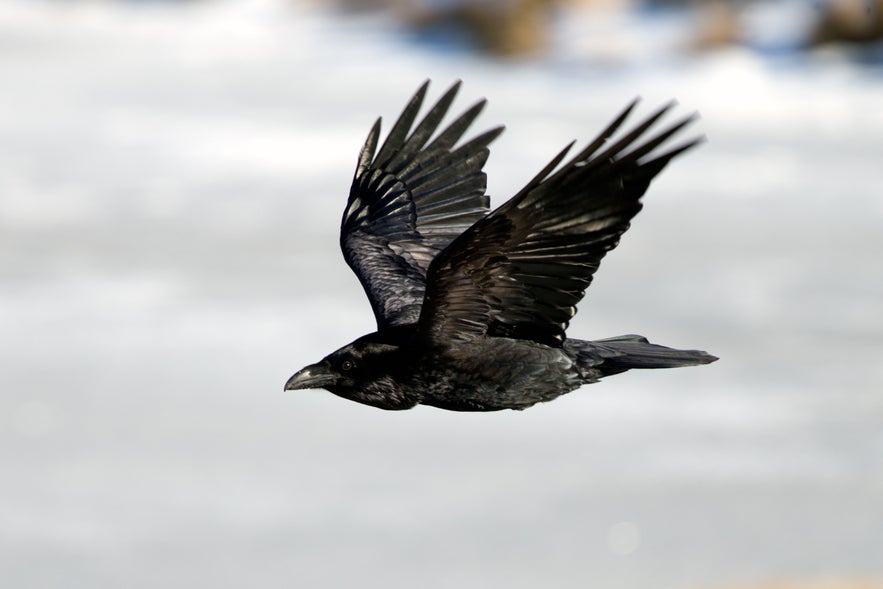 The raven is prominent in Icelandic wildlife and the country's longstanding cultural beliefs. They are highly vocal birds with a wide repertoire of calls, croaks, and other vocalizations used for communication. They are also highly adaptable and can be found in a wide range of habitats, including forests, mountains, grasslands, coastal areas, and urban areas - perfect for the diverse nature of Iceland!
The raven is prominent in Icelandic wildlife and the country's longstanding cultural beliefs. They are highly vocal birds with a wide repertoire of calls, croaks, and other vocalizations used for communication. They are also highly adaptable and can be found in a wide range of habitats, including forests, mountains, grasslands, coastal areas, and urban areas - perfect for the diverse nature of Iceland!
It is likely that ravens made their home in Iceland long before the country was settled. Their numbers no doubt grew after settlement as they have proven adept at adapting to human civilization. Ravens also play an important role in the intriguing history of Iceland's discovery around 870.
Raven-Flóki and the Naming of Iceland
Hrafna-Flóki sends out his ravens to find Iceland. 19th-century illustration from Wikimedia, Creative Commons.
Flóki Vilgerðarson was a famous Norseman and one of the first explorers to intentionally sail to Iceland, seeking new lands to settle. While the journey was long, perilous, and full of uncertainty, the crafty Flóki had some tricks up his sleeve.
As Flóki set off on his journey to find Iceland from the Faroe Islands, he took with him three ravens that he released at different stages of his voyage. The first raven simply flew back to the Faroe Islands, while the second raven flew in circles and returned to the ship, suggesting that no land was in sight. Finally, the third raven flew westward and did not return, leading Flóki to follow its direction.
- See also: Where is Iceland?

A statue of Raven-Flóki outside the Viking World Museum in Njardvik.
This guided him to the coast of Iceland and earned Flóki the nickname "Hrafna-Flóki" or "Raven-Flóki." Flóki's attempt to settle down in Iceland didn't go smoothly, and after a harsh winter and inadequate preparation, he decided to leave the island. He is credited with giving Iceland its current name after seeing ice float in a nearby fjord: "Ísland," meaning "Ice Land." The name was intended as a slight, but Flóki could definitely have done much worse!
A statue of Raven-Flóki can be found in the town of Njardvik outside of the Viking World Museum, where you can also find a life-size replica of a Viking ship. If you're interested in learning more about Iceland's Viking heritage, check out our great selection of culture tours.
- Read more: A Complete History of Iceland
Ravens in Norse Mythology
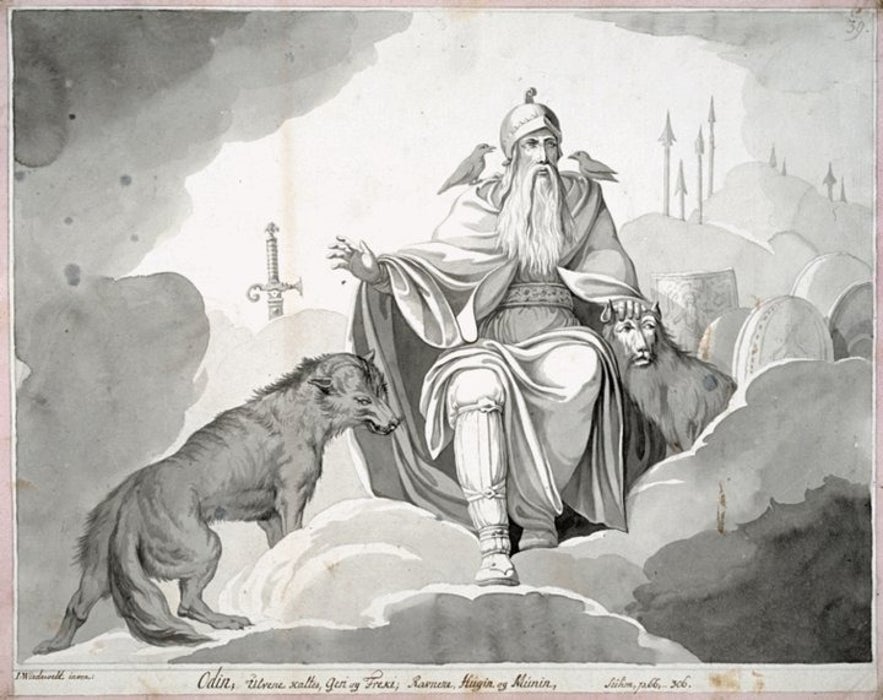
Odin is depicted with his ravens, Huginn and Muninn, and his wolves, Geri and Freki. The illustration is by Danish artist Johannes Wiedeweldt, circa 1780.
Since ancient times, there have been tales of Germanic and Gothic nations that sought to predict the future by observing the flight patterns of birds. Vikings also considered birds' behavior to symbolize things to come.
- Read more: Vikings and Norse Gods in Iceland
Who Was the Raven God?
In Norse Mythology, ravens are closely associated with the god Odin, the Allfather and chief of the gods. Odin is known as the god of knowledge, having sacrificed one of his eyes to the Well of Mimir in exchange for a drink from its waters, granting him unparalleled insight into the secrets of the cosmos.
Odin is often depicted with two ravens named Huginn and Muninn perched upon his shoulders. These ravens served as Odin's messengers, scouts, and confidants, flying all over the world to gather information. They served as the Allfather's eyes and ears, keeping him up to date with the goings-on of the world.
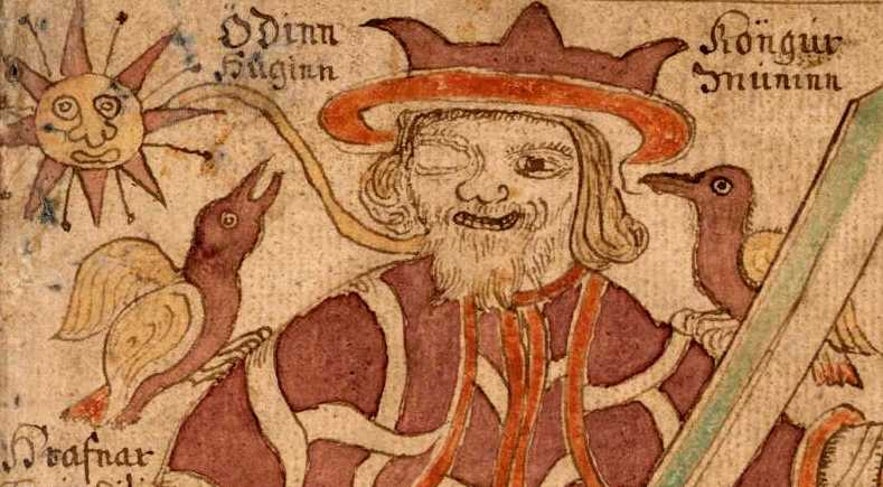
The one-eyed Odin with his trusty spies, Huginn and Muninn, as illustrated in Prose Edda.
According to the myths, Huginn and Muninn can freely travel between the Nine Realms of the Norse cosmos, including Asgard (the realm of the gods), Midgard (the realm of humans), and Jotunheim (the realm of the giants). They are capable of traversing vast distances in search of knowledge and information to bring back to Odin. The following passage is translated from the 13th-century manuscript Prose Edda by legendary Icelandic writer Snorri Sturluson:
Two ravens sit on Odin's shoulders and bring to his ears all that they hear and see. Their names are Huginn and Muninn. At dawn, he sends them out to fly over the whole world, and they come back at breakfast time. Thus, he gets information about many things, and hence, he is called Rafnagud (raven-god).
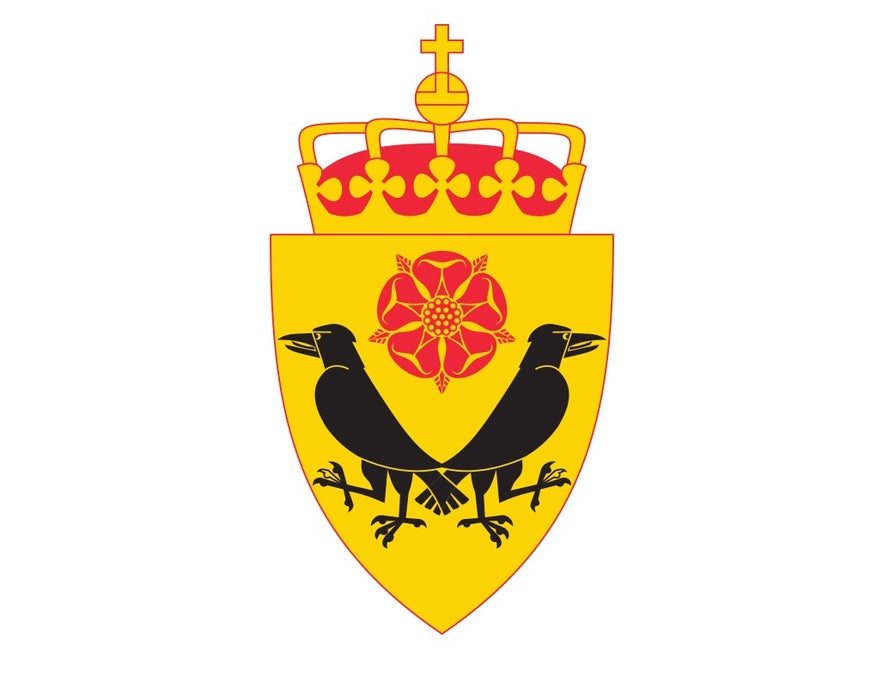
Huginn and Muninn are featured in the coat of arms of the Norwegian Intelligence Service.
In Norse mythology, ravens are also associated with death and battle. They are often found on battlefields, scavenging the corpses of fallen warriors. Ravens are sometimes seen as ominous symbols, foretelling or presiding over conflict and death, reinforcing their connection to Odin, who is also a god of war.
Additionally, the image of the raven as a creature of intelligence and mystery is deeply ingrained in Norse culture. Thanks to their surveillance abilities, Huginn and Munin even made their way into the coat of arms of the Norwegian Intelligence Service!
The Raven Banner
A modern interpretation of the raven banner from the Bayeux Tapestry. Image from Wikimedia, Creative Commons, by Skydrake.
The raven banner was a flag flown by various Norse chieftains in the Viking age. Although a complete visual depiction of the banner does not exist, period descriptions describe it as a war banner with the mark of a raven. It is highly likely that the chieftains flew the banner in honor of Odin.
Historical accounts suggest that the raven banner was a tall, rectangular flag made of fabric, with the image of a raven embroidered or painted onto it. Some descriptions indicate that the raven was depicted with its wings spread wide, as if in flight, while others suggest that it was shown with its beak open or clutching objects such as rings or spears in its talons.
The raven banner is known to have been flown by the sons of Ragnar Lothbrok and by the Great Heathen Army, which invaded England in 865. It was also present in the army of King Cnut the Great at the Battle of Ashingdon in 1016, and it is assumed that Harald Hardrada also flew the banner in his invasion of England.
Ravens in Icelandic Folklore and Superstition
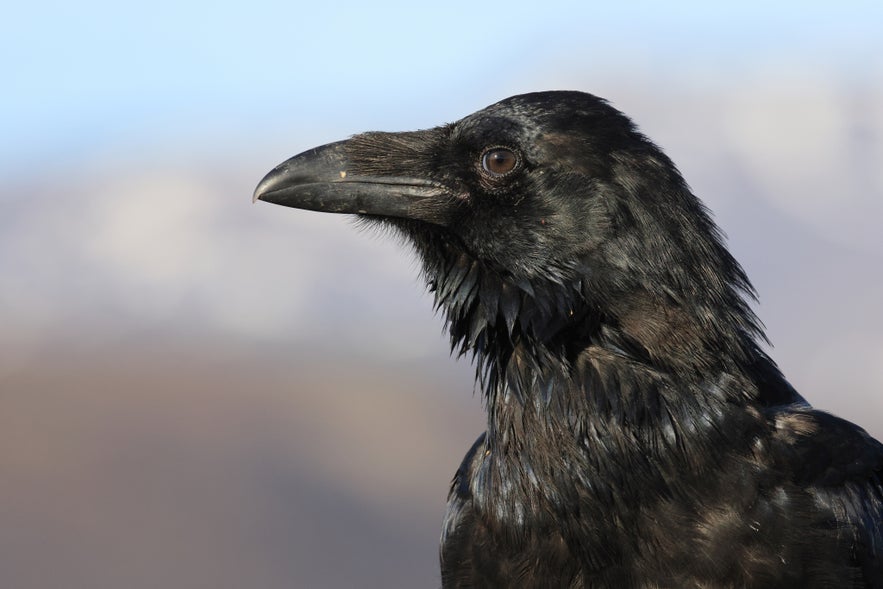
With such a prevalent place in mythology, it is no surprise that ravens are commonly used in Icelandic folklore and superstition. In the Middle Ages, the image of ravens became more negative in part due to Christianity, maybe because of the raven's appearance in the story of Noah's Ark in the Bible's book of Genesis.
After the rains that caused the great flood stopped, Noah released a series of birds to determine if the waters had receded sufficiently for the earth to be inhabited again. The first bird he released was a raven, which flew back and forth searching for dry land but did not return to the ark but decided to go at it alone.
Noah then sent out a dove, which returned with an olive leaf in its beak, indicating that the waters had lowered enough for trees to grow. After waiting for yet more time, Noah sent out the dove again, which did not return, signaling that the land was now dry and habitable.
According to superstition, the raven was cursed because of this to be a carrion-eating omen of bad things to come. It is no wonder that many of the beliefs in Icelandic folklore regarding the poor raven were rather negative!
- See also: Folklore in Iceland
Superstitious Beliefs About Ravens in Iceland
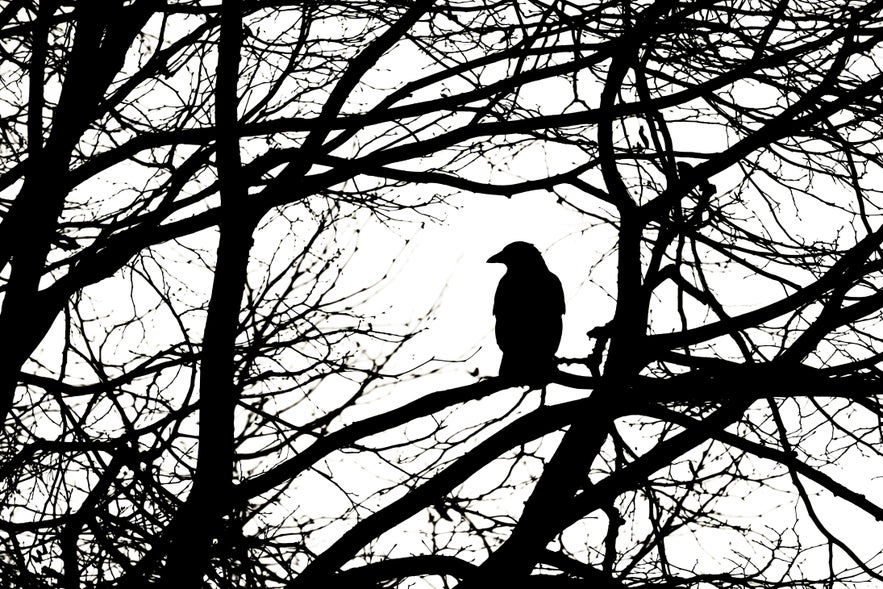
Photo by Mark Timberlake.
Throughout the ages, ravens have been a part of many superstitions in Iceland. There are even descriptions of ravens being used as components in sorcery and witchcraft in Iceland, although it's unlikely that all of those rituals were actually performed. Here are some examples of superstitious beliefs involving ravens.
- If a raven cronks atop the cross of a church during mass, someone in the congregation is not long for life. Similarly, if a raven behaves weirdly, it is said to be an omen of death
- If a raven flies against you as you leave home, it is considered a bad omen, but if he flies in the same direction as you, it is said to be a good omen.
- If a raven flies in silence above people working a field, you should expect a drought, but if it cronks, you should expect rain.
- A raven's feather causes arguments between married couples. As a result, you should never keep their feathers inside your home.
- A raven's droppings on the deck of a fishing boat indicate a good haul to come.
If you're ever in the Westfjords, you should make a stop in Holmavik to check out the Museum of Icelandic Sorcery and Witchcraft. The carefully curated collection there, including magical staves, runes, and other mystical objects found there, grants insight into a time when the belief in magic played a larger role in the daily life of Icelanders.
Ravens in Modern Iceland
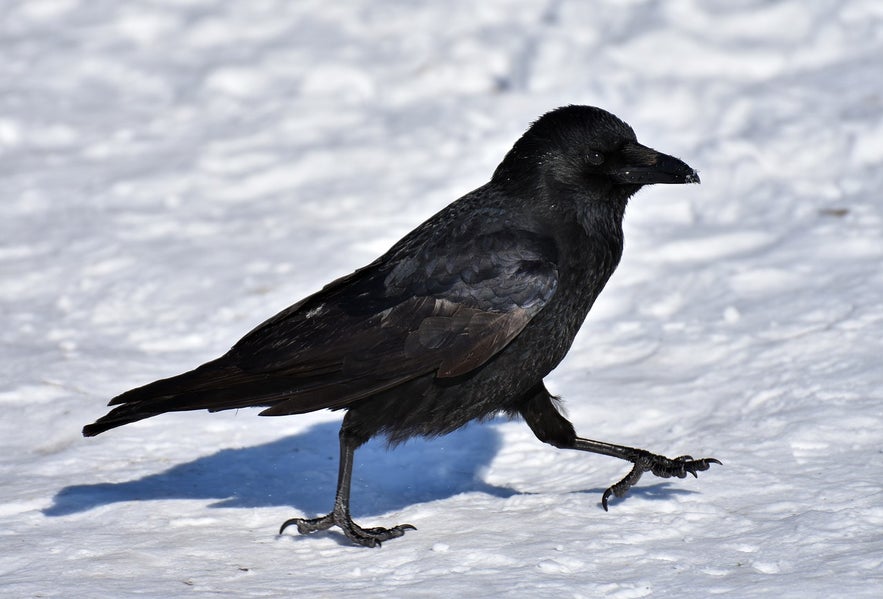
Image by Alexa_Fotos.
It is estimated that there are around 2,500 nesting pairs of ravens in Iceland, with the autumn population reaching approximately 12-15,000. They are highly social birds, often form tight-knit family groups, and are monogamous, remaining loyal to their mate for their whole lives.
While the people of Iceland haven't, for the most part, begun worshipping Odin again, the general attitude towards ravens is quite positive. Seeing them hop around their meals happily or observing the daily lives of Icelanders perched atop a light post is generally well received.
The Icelandic Institute of Natural History's emblem is a raven sitting on a rock. The institute fights against the unnecessary hunting of ravens.
The relationship between Icelandic farmers and ravens is complicated, as the birds can damage farmers' livelihoods. An example is the raven preying on the ducklings of the common eider, whose feathers are harvested by farmers for filling pillows and quilts.
Thousands of ravens are hunted in Iceland each year, which is an overreaction, according to the Icelandic Institute of Natural History. Thankfully, the number of ravens hunted annually has decreased in recent years.
Icelandic Raven Names
Names inspired by ravens are very popular in modern Iceland. Thousands of people have names relating to ravens in some way, showcasing the nation's love for the bird. Here are a few examples of names that pertain to ravens in Iceland:
Masculine Names:
Hrafn
Hrafnar
Hrafnkell
Krummi
Rafn
Rafnar
Feminine Names:
Hrafndís
Hrafney
Hrafnhildur
Hrafntinna
Rafney
Rafnhildur
Icelandic Songs About Ravens
Ravens have inspired many songs and poems in Iceland. These include lullabies and folk music that often poetically detail the raven's daily struggles for survival in Iceland's harsh wilderness or the bird's symbolic connection to death.
The song above, called "Krummi svaf í klettagjá" or simply "Krummavísur," is a performance of a popular folk song based on a poem written in the middle of the 19th Century. The song, performed by the Icelandic music ensemble Voces Thules, tells of a raven sleeping in a rocky gorge on a cold winter's night before heading out and feasting on the carcass of a sheep. Yum!
The Icelandic Raven Webcam
Since 2012, a raven couple has nested in the rafters outside the department store BYKO in the town of Selfoss. Staff at the store placed a webcam by the nest, where you can observe the couple, now called Hrefna og Hrafn, in their natural habitat—assuming they're home! You can view the live cam feed from BYKO here:
Are There Crows in Iceland?
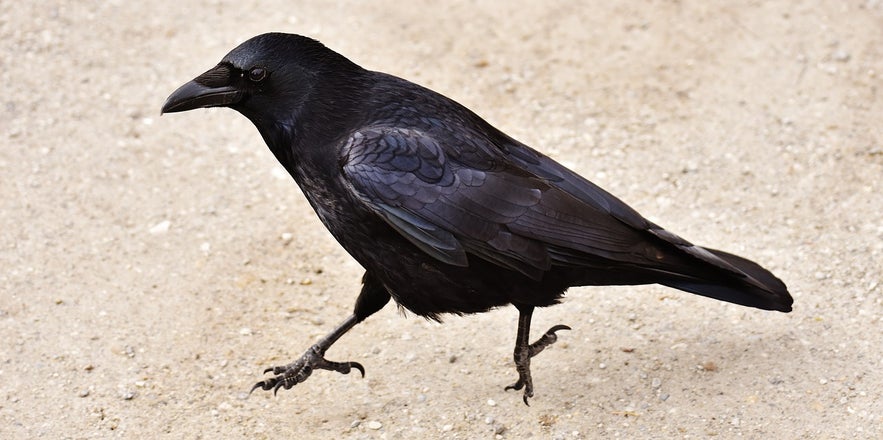
Image by Alexa_Fotos.
Unlike the raven, crows are not part of Iceland's wildlife. Crows do sometimes make temporary stops in Iceland and have been known to unsuccessfully try to nest on the island. Scientists are not sure why their attempts have all failed, but it might have to do with the climate.
Crows and ravens are both members of the Corvidae family and share many similarities, but they are distinct species with some notable differences. Ravens are larger with shaggier throat feathers, wedge-shaped tails, and heavier bills, while crows are smaller with more rounded tails. Ravens often soar in flight, while crows flap more continuously. Their calls also differ, with ravens producing deeper, croaking sounds.
We hope you enjoyed learning more about ravens in Iceland. Have you ever encountered a raven in Iceland? Was it a good or bad omen? Let us know in the comments!



